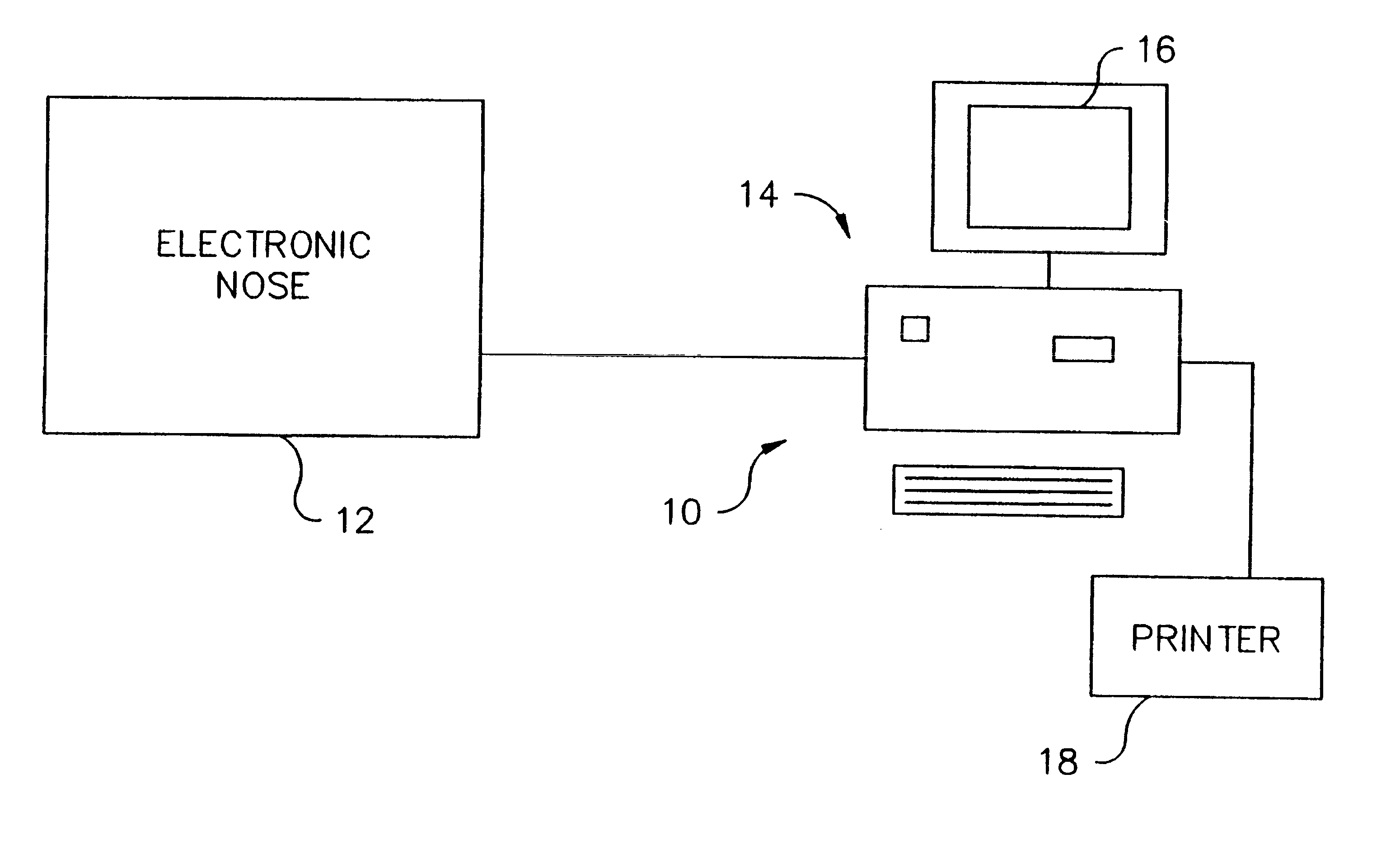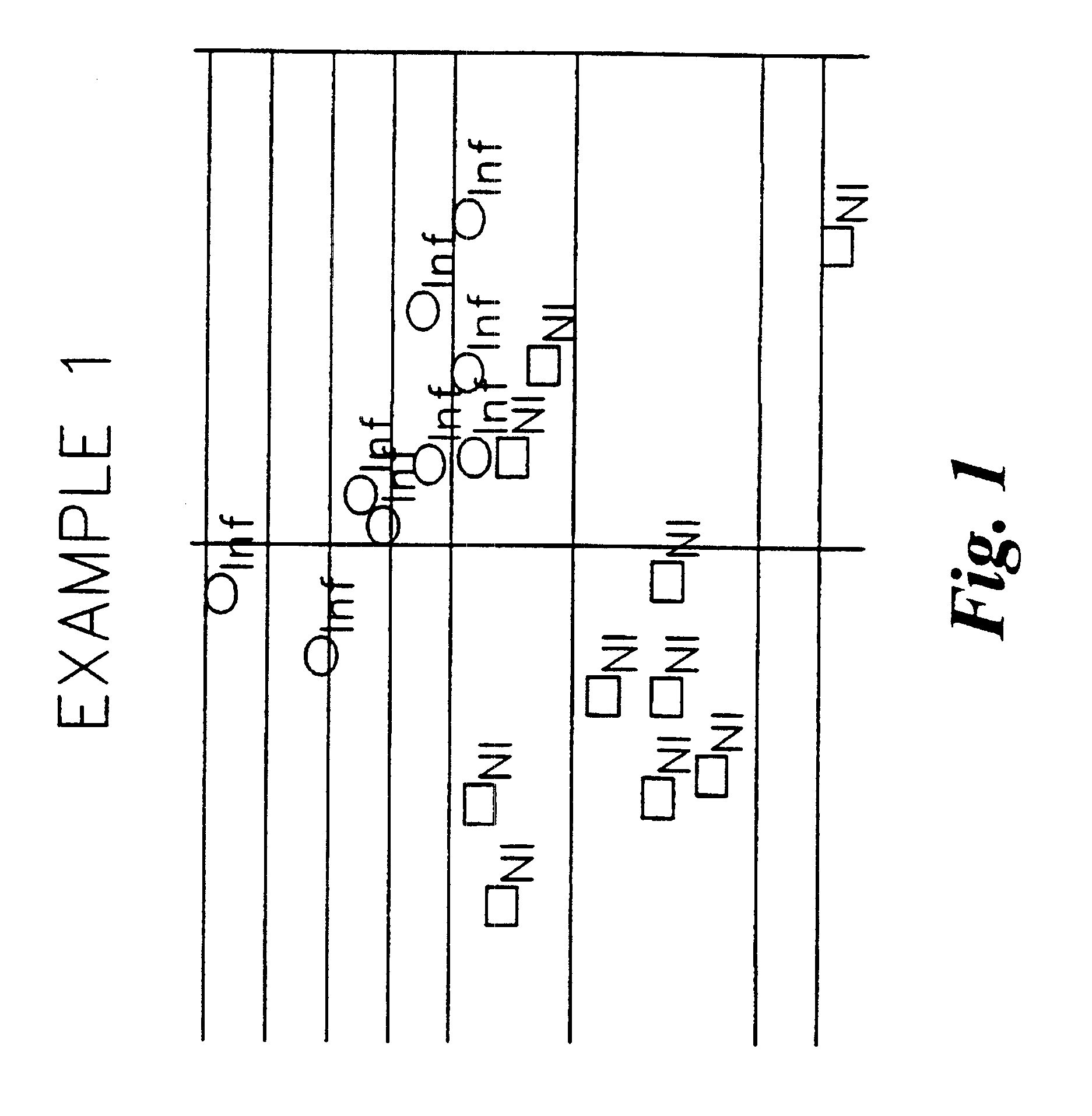Diagnosing intrapulmonary infection and analyzing nasal sample
a technology for intrapulmonary infections and nasal samples, applied in the field of diagnosing intrapulmonary infection and analyzing nasal samples, can solve the problems of inability to present data to support these uses, time-consuming and resource-intensive process for diagnosing pulmonary infections in mammals such as humans, and achieve the effect of rapid detection of lung infections
- Summary
- Abstract
- Description
- Claims
- Application Information
AI Technical Summary
Benefits of technology
Problems solved by technology
Method used
Image
Examples
examples 2-6
FIGS. 4-8 provides additional patient data which shows distinguishable clusters for patient samples which have different types of lung infections and for uninfected patient samples. FIGS. 4-8 are self-explanatory and thus are not further described herein.
The samples collected in Examples 1-6 used a vapor form of expired air from the patients, and did not use condensate of the vapor form.
example 7
In example 7, testing was done on condensate from the patients since it is known that condensate contains volatiles from the expired air. Test equipment included a standard Aromascan A32S / CEM using a temperature controlled 25 ml sample vial and a carrier gas.
The protocol for obtaining and testing samples in Example 7 was as follows:
1. Collect 10 ml of condensate from a collection vessel inserted just before the ventilator catch pot using a plastic syringe.
2. Extract 250 .mu.l of condensate into the syringe.
3. A reference signal was set up for the Aromascan A32S / CEM by passing approximately 90 ml / min of carrier gas through a sample vial containing 2 ml of 10% sodium hydroxide (NaOH) held at 33.degree. C.
4. At 60 seconds into the run, the syringe containing 250 .mu.l of condensate is injected into the sample vial.
5. At 180 seconds into the run, the sample vial is replaced with a fresh vial of 2 ml of 10% NaOH to act as a wash and to become the next sample vial.
FIG. 9 is a schematic di...
PUM
| Property | Measurement | Unit |
|---|---|---|
| turnaround time | aaaaa | aaaaa |
| time | aaaaa | aaaaa |
| electrical property | aaaaa | aaaaa |
Abstract
Description
Claims
Application Information
 Login to View More
Login to View More - R&D
- Intellectual Property
- Life Sciences
- Materials
- Tech Scout
- Unparalleled Data Quality
- Higher Quality Content
- 60% Fewer Hallucinations
Browse by: Latest US Patents, China's latest patents, Technical Efficacy Thesaurus, Application Domain, Technology Topic, Popular Technical Reports.
© 2025 PatSnap. All rights reserved.Legal|Privacy policy|Modern Slavery Act Transparency Statement|Sitemap|About US| Contact US: help@patsnap.com



